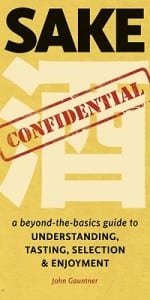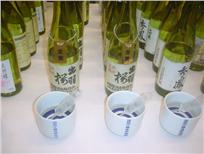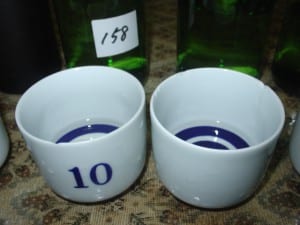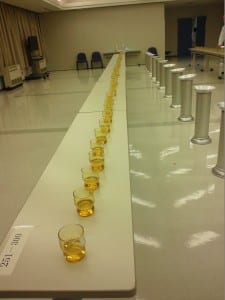Happy New Year! Happy New “Brewing” Year that is! Welcome to 28BY, or “The Year Heisei 28 Brewing Year.”
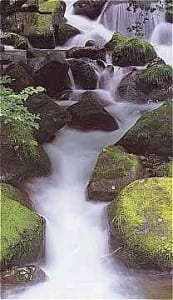 We have calendar years that run from January 1 to December 31. And we have fiscal years that are more variable, but tend to run from April 1 of one year until March 31 of the next, especially in Japan. And, most relevant to us, we have Brewing Year, or Jozo Nendo, which runs from July 1 of one year until June 30 of the next. Here’s an explanation of why that exist as it does.
We have calendar years that run from January 1 to December 31. And we have fiscal years that are more variable, but tend to run from April 1 of one year until March 31 of the next, especially in Japan. And, most relevant to us, we have Brewing Year, or Jozo Nendo, which runs from July 1 of one year until June 30 of the next. Here’s an explanation of why that exist as it does.
First of all, while Japan does relate to the fact that this is 2016, officially and traditionally it is called Heisei 28, or the 28th year of the era of Heisei. So to go from Heisei to western years, subtract 12 – this will work well most of the time. A bit of a mathematical hassle, especially when drinking, but not an insurmountable obstacle.
While most sake is best young, sometimes sake is aged by the kura before being released. And sometimes, we can see an indication of the year in which it was brewed. This should make it all simpler – provided we know how to read that information. The problem is that a given sake brewing season stretches across two calendar years.
Sake brewing starts in the fall of one year and ends in the spring of the next. So, if a sake were labeled only as year Heisei 27 (2015), it would be brewed in one given season if it were January of 2015, but be a completely different brewing season – with different rice, weather, and possibly even more – if it were October 2015. This difference could be likened to two totally different vintages in the wine world. So, we need a bit more detail.
This point did not escape the clever folks in the brewing industry who rice ready for harvest
needed a way to speak about the sake of one season, unencumbered by trivial details like how the rest of the world measures time. It also was a 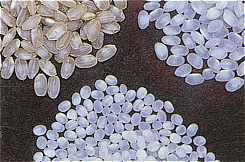 necessity from the viewpoint of the folks at the ministry of taxation, who also needed a more efficient way to tax kura on their output.
necessity from the viewpoint of the folks at the ministry of taxation, who also needed a more efficient way to tax kura on their output.
And so long ago they came up with the concept of the “Brewing Year,” or BY. Just like fiscal years can differ from calendar years, in Japan the Brewing Year runs from July 1 to June 30th of the following year. This, then, encompasses the entire brewing season of every brewer in the country in one clean 12-month period.
So, BY27 ran from July 1 2015 until June 30 2016. And sake brewed last fall and into this spring would be considered part of BY27. And, BY27 and we have entered into BY28. So, even though calendar year 28 (read: 2016) is half over, we just now started BY28.
Why do they use July? Why not October 1 (Sake Day!) or another day in the fall when brewing begins? Well, consider that there are various scales of operation. A tiny brewery might begin in November and finish in February. More common is starting in October and finishing in April. A very large brewer might start as early as August and run until the next June. And there are even one or two that brew all twelve months of the year.
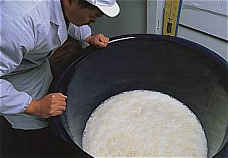 Since production is focused on the coldest month of the year, January or so, brewing operations will expand in both directions from that point. So by starting in July and running to June, the industry can capture a single brewing season for all brewers, big or small. While it ain’t rocket science, it is at least somewhat clever.
Since production is focused on the coldest month of the year, January or so, brewing operations will expand in both directions from that point. So by starting in July and running to June, the industry can capture a single brewing season for all brewers, big or small. While it ain’t rocket science, it is at least somewhat clever.
How does this help us? Well, when we see a sake labeled, for example, 26BY, you know that since Heisei 26 is 2014, this sake was brewed in the season beginning in the fall of 2014, and running into the spring of 2015.
That would make it about a year to a year and a half since being brewed, just about right for much sake, if young by some mature sake standards.
Note, this is not on all bottles. It is common to talk about it with producers and other sake adherents, but the only time it is actually printed on a label is when the sake has been aged deliberately, and the brewer wants you to know just how long it has been aged. It is indispensable in those situations, since the date that must be printed in tiny characters in the corner of the label legally indicates about when it was shipped from the brewery, and that may not let us know just how long it was aged before that.
Again, since aged sake is such a small drop in the bucket, you will not see this so commonly. But if and when you see such mysterious nomenclature, you will know precisely how old your sake is.
~~~~~~~~~~~~~~~~~~~~~~~~~~~~~~~~~~~~~~~~~~~~~~~~~~~~~~~~~~~~~~~~~~
Interested in sake? Check out my most recent book, Sake Confidential.





